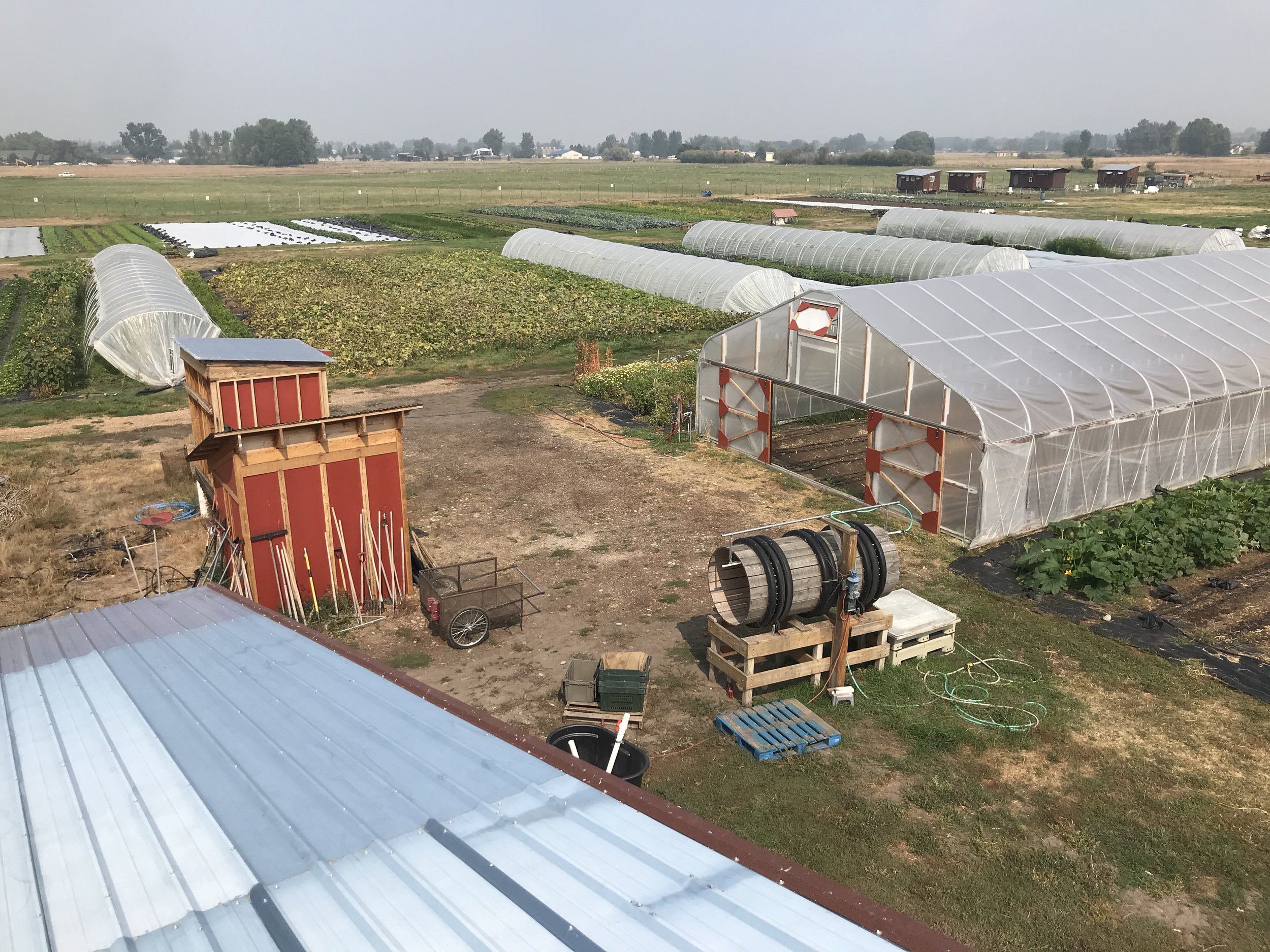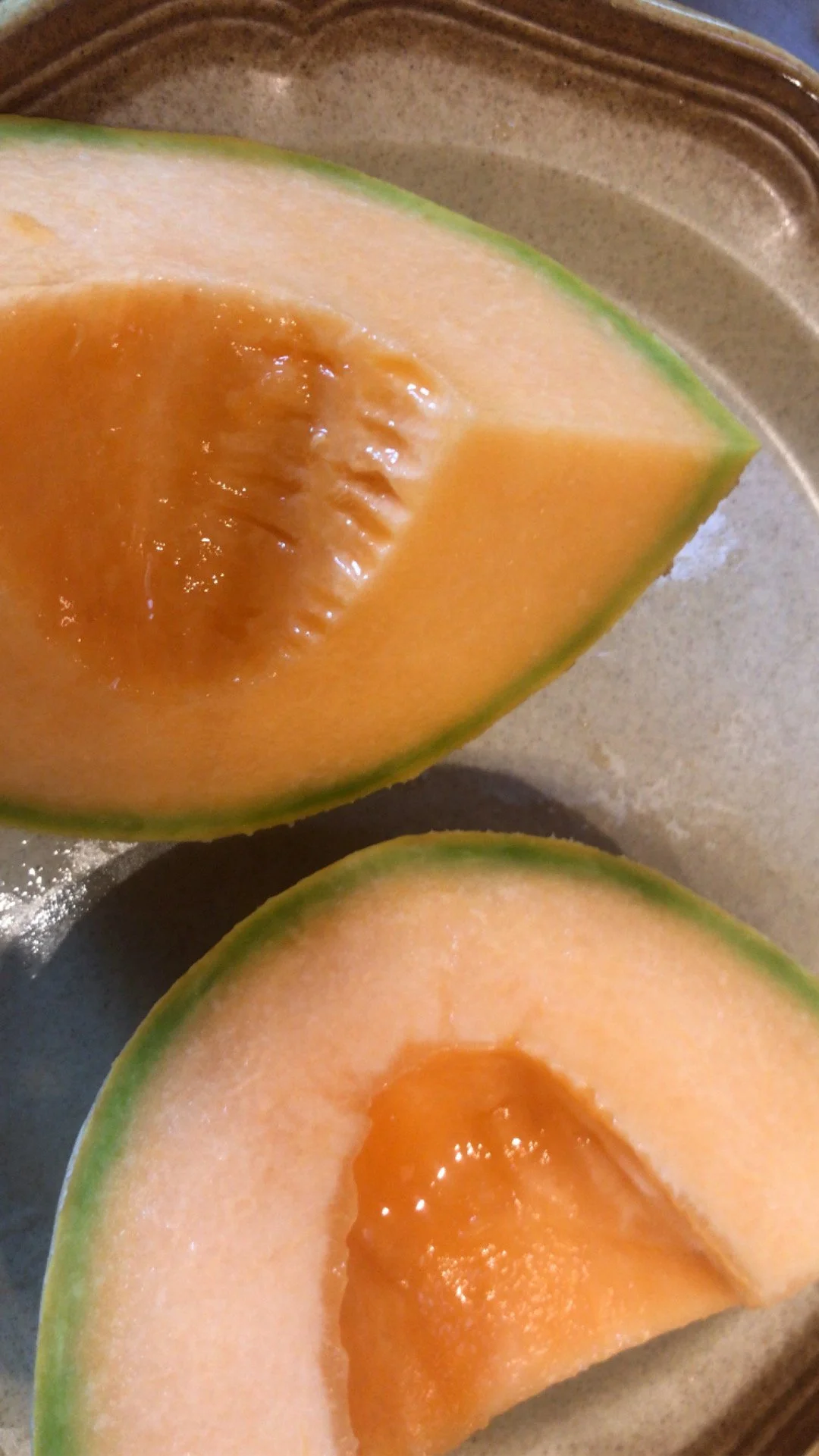The tipping point between the end of March and the start of April might not seem like much, but somehow that moment is also everything. A single farming day in that slip between seasons can encompass it all and . I think March can set the tone for the entire season, because in a way it’s all the small things, these little moments here and there that make everything. “It was one of those March days when the sun shines hot and the wind blows cold: when it is summer in the light, and winter in the shade.” That’s what Charles Dickens said in Great Expectations. Weather-wise, we have a lot of those days, and much of this season our internal weather is just as conflicted. And, all transitions are awkward.
Iron pipe and fittings on our drip tape winder creak against the new stand as our Sabrina winds up drip tape from meds throughout the farm. Normally a November task, all of this was trapped under snow last fall, and we have just finally been able to peel back the landscape fabric and finish our fall cleanups as we work to prepare spring ground. Sabrina runs the winder which pulls tape in faster as faster as the circle of bundled drip tape grows. I pucker my face at the joy of a new tools and furrow my brow just a little: the stand is the first version and needs adjustment. But then I have to crack a smile; Sabrina is getting into it and is picking up speed; as she cranks on the wheel, the bails of drip tape wind and bundle neatly. So much of a farmer’s work is simply moving stuff. And that’s what we are doing, trying to make order out of chaos.
Across the field, and the chatter of greenhouse plastic from our half dozen moveable caterpillars, Mary and I are busy wrestling transplants into the ground. This transplanting, with our paper pot transplanter, isn’t going as smoothly as we’d hoped. The plants are a few days too large leaves and roots tangling together, so they don’t feed so smoothly through the transplanter even though the soil is just about perfect. These are some of our pre-market and early-market greens, and there are so many flats of them that we’ve brought them out to one of the caterpillars in the bed of our truck, and it’s parked tight at the end of the field, in the headlands. Crammed in the headlands are tarps being pulled off the field, bins of stuff to sort and organize, and a small mountain of sand for the sandbags that hold down tarps and row cover. It’s not pretty. For a lot of the spring plantings, especially with the wind that bristles down Mill Creek, we’ll use the 16 pound bags, but all morning, Hannah has been making some lighter bags, for easier days, marked with red zip ties.
Back in the transplants, I look up at Mary, worried. Aside from a little bit of field cleanup, and “the daily’s,” our term for routine tasks, these transplants are really the only thing we will manage to get done today (there were a few more big things on the list). I had managed to shape the four beds inside the caterpillar, squeezing the Italian BCS walk-behind tractor into the structure, which we use to stir the soil, mix amendments, kissing the soil - whisking it, and just brushing the outer ribs of the galvanized top rail fence which we bent to make one of the caterpillars that moves across the farm. It’s very grounding, running the small tractor, and literally seeing piles of transplants appear from the truck and garden carts and just about start before the tractor work is done. This is the rhythm of spring, when our farm tries to wake up, and so often we have to stop what we are doing, to open and close a high tunnel or vent a caterpillar, making sure the spinach or early daffodils don’t get too warm. We often have to call backup on the radio, swallow hard as our team — they are both very experienced and new at the same time — learn to ask questions, call us out on our promises of what we said we’d do, and what we wouldn’t.
I hear Glenn’s four wheeler, with its unmistakable rumble, as he zooms about on the tasks of his own small homestead across the road. He came by earlier in the week to grab “Zip Tie,” the last escape-artist hen that could still somehow sneak under the 9.7 Kilovolt mobile electronet fence. The whole crew looks up at the sound; wonders if Glenn is coming over; or maybe it’s about zip tie, or the wind. Maybe it’s even Susie and Dana, new farmers that are borrowing one of our walkin coolers for the season, coming by with a second vehicle to pilot the walkin cooler that we built on a trailer base, back home to their own farm. Maybe like me, they are all wondering about the magic and mysteries of the wind, weather, and neighbors.
I don’t know if I’ll ever stop saying that it’s going to be our hardest season ever. Maybe when I stop saying that, it means that it’s not hard, and that’s not the point of farming. What makes this season different is that we are taking on our larger crew than ever, and we know it will take a lot on our part to make it work. We finally feel like we have calculated what it takes to run the entire four season farm, get all the things done, get some more time to do other work (more about that in the future), and also make sure the season has a lot fun of surprises for our team and community. As we are still finishing the packshed, it all seems a bit much, but then again, a four season farm in Montana was never really a reasonable thing anyway.
And it’s spring. It’s the hopeful, lovely time, but also, especially early on, I call it ugly season, and it’s a hard one. It’s easy to feel short on everything this time of year: time, space, resources, energy. It’s a funny time, when we are doing that field cleanup that we didn’t quite finish, preparing ground, getting the last orders done, getting ready to accept more team members that are arriving in just a couple of weeks, and working each day on the simple things: trust, culture, clarity. We aren’t just building a farm, or if we are, we are both building community and trust and love in our team, but in our greater community. And that might be why it’s also the most important time to be as generous as we can with all the things that feel short.
Now, as I finish writing on the weekend, the snow shudders against the barn. Mary and I finish covering, making notes about the week to come. We run out to cover the plants and close up tunnels just as the second snow squall for the day finishes and bookends the day, closing the last of March for us, pushing April and Spring into us, and the farm, even if we are both excited and ready and not ready.



















































































